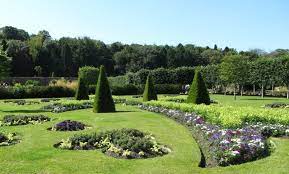
Neatly edged flower borders
Mid-winter is a good time to take a good hard look at your garden. You can clearly see, the structure of the garden and it’s layout. Perhaps the crisp lines of the rectangular beds you set out and the geometric circles and square of planting on the lawn, have lots their crispness. Or has the straight boarder along the house begun to wavier. Have your planting beds become a little woolie about the edges?
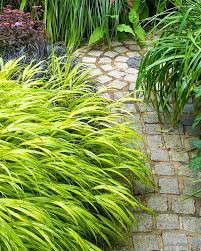
Planting flopping over the path edges.
Now is a good time to redefine the edge of planting boarders, taking sprawling planting back in hand. Mature planting boarders can often become much larger than originally designed, the plants mature and flop and move forward, the edging geraniums and other exuberant herbaceous plants freely flow out of the flower bed onto the lawn, you start to cut round them and so year on year, the bed gets bigger and wider and the shape and form of it is lost. Paths can also fall prey to this, a little softness of plants edging the path is one thing. Overflowing planting can easily turn a wide path into a narrow slalom course, which can get almost unpassable, particularly in wet summer weather when the weight of wet planting flops and sags forward even more. It can also be quite a trip hazard.
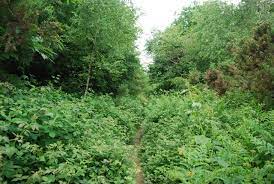
Over grown path
But there are a number of things you can do to get your planting beds back into shape and this is the time of year to do it. Firstly take a good hard look at the shape and size of your planting, has it grown in size over the years? Have plants spilled to the front to get light leaving bare areas under other shrubs in the middle or the back of the boarder? So this may be the opportunity to not only redefine the existing edge of the boarder, but perhaps to completely reshape the boarder or even to reduce it’s size. So the next stage is to mark out using canes, the shape and size of the boarder, and then use string and pegs to mark the edges.
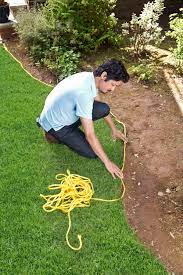
marking out the edge of a flower bed
Now you need to prune back any planting in the way of the new edge and possible even dig some plants out, perhaps they can transplanted back into new positions with in the same boarder or found a new home somewhere else in the garden or given to gardening friends. Be bold, it is no good putting an edging in that will instantly in the first growing season be swamped by the planting.
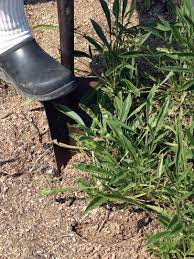
Digging up plants along the edge
Next you need to decide what job your edging is doing, to help you decide what type will be suitable. Is the edging to be laid flat and level with the lawn to make lawn care easier, so you can mow over it so it is a mowing strip. Brick or paving slabs work well.
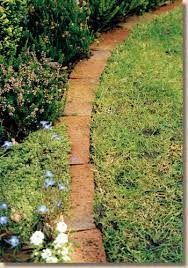
brick mowing strip
Is the edging to help to retain a slightly higher soil level of the flower bed from the lawn level. Then both a metal edging of the right height like ever-edge or a brick edging would work.
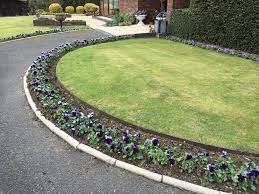
Ever-edge edging round lawn
Is the edging to keep taller plants flopping on the edge of paths, perhaps you would like it to be decorative. Traditional rope edging tiles are beautiful, but if you do not have the budget or the time to hunt demolition yards then, there are dyed concrete edging kerbs that may be to your liking. As well as some fancy metal edging.
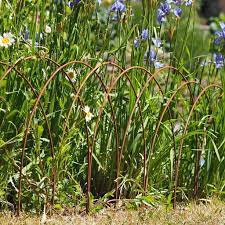
metal hoop edging
Think about the area of the garden and the style of your garden to choose the right edging, so if it is a cottage garden for an old thatched cottage, then tile edging or bricks on edge will be more suitable.
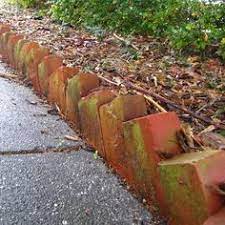
brick edging
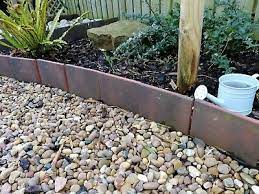
Tiles used as an edging
A woodland garden would be best with old logs or even sleeper edges, which even if they are new would soon weather down, to fit the mood of the woodland planting.
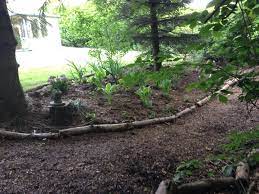
log edging in Woodland planting
If your garden is a dry seaside garden, then, pebbles, and larger stones and even boulders, may be the edging of choice.
Once you have decided on you edging material and there is a huge choice on the market. Give yourself good working room in the planting bed to install your new edging. If you have reduced the size of the boarder then you may need to repair the lawn, with some top soil raked to levels, ready for seeding in the spring. Or you may have been lucky enough to have regained a path, from excess planting.
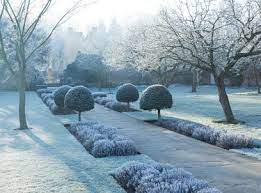
Well edged flower beds, give the winter garden formal elegance
If you need help to restore an old boarder or a planting area in your garden. Then I would be happy to help and this is the very time of year to carry out the work. Give me Emily a ring 01273 470753. I would be delighted to discuss your garden project with you.
